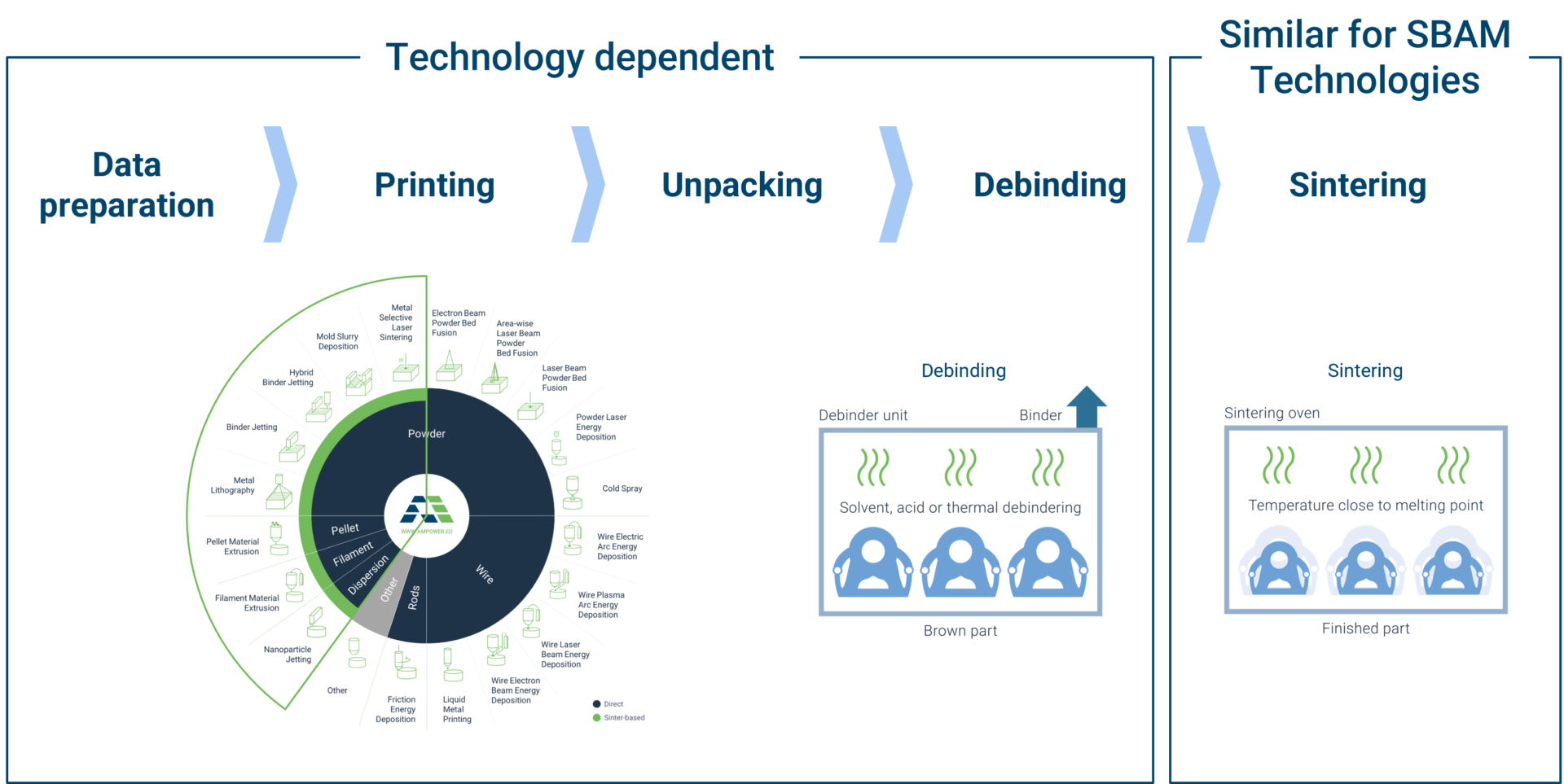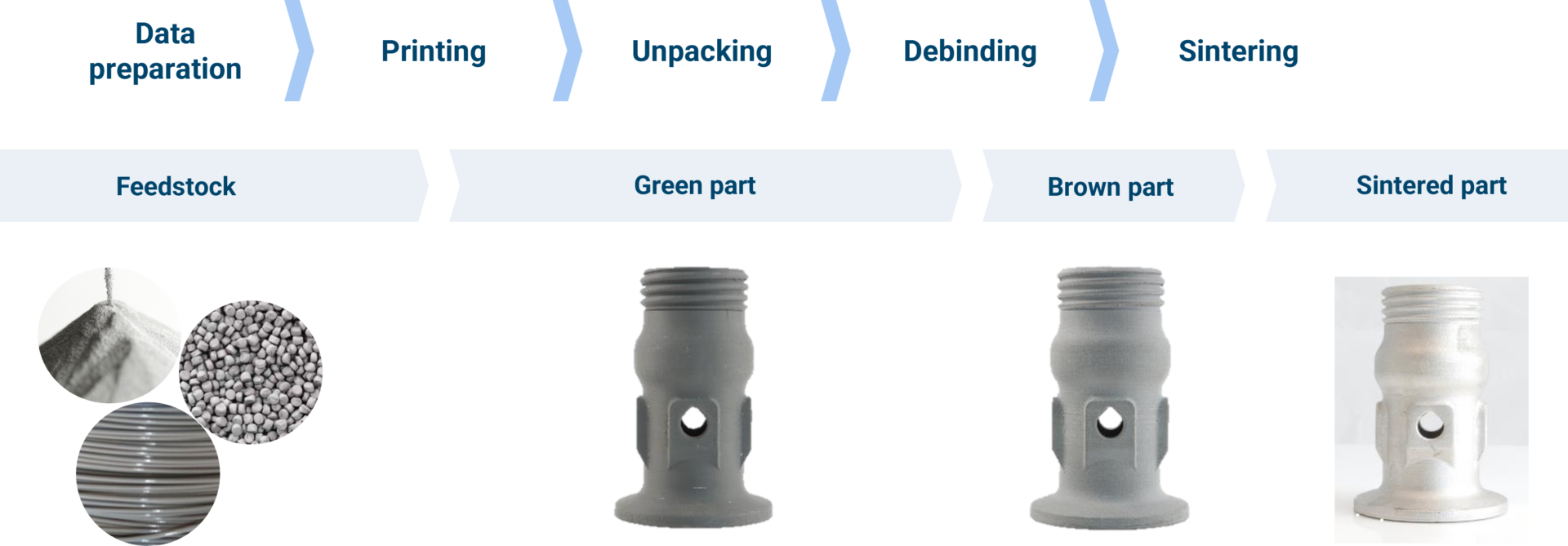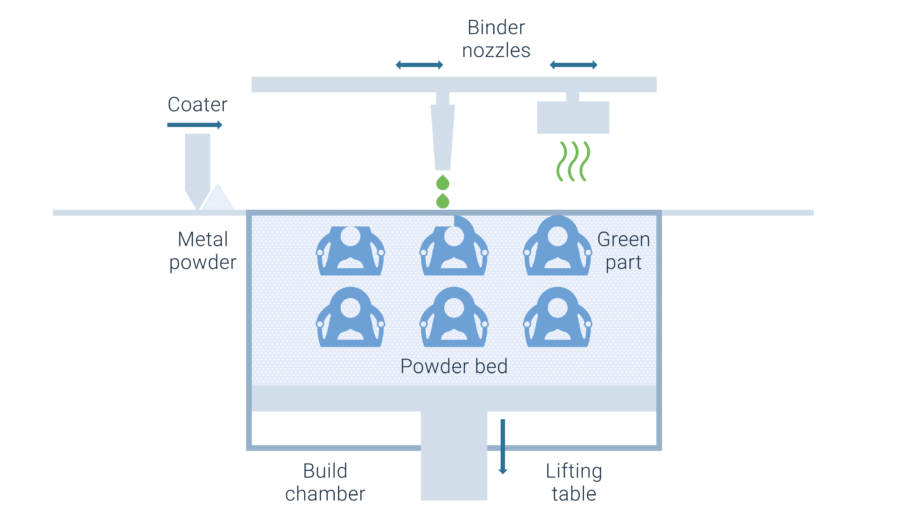The AM Mindset
The AM mindset
A new state of mind to use the full potential of Additive Manufacturing
Additive Manufacturing has the potential to disrupt entire industries by completely changing a company’s products, supply chain as well as their business model. However, this does not work by simply taking existing designs that were developed for conventional technologies and replacing them with AM instead. What is needed is a completely different mindset – often referred to as the AM mindset. But what exactly is the AM mindset?
There is no uniform definition or description of what the AM mindset is, so we created our own:
“The AM mindset is the ability to completely rethink products, supply chains and business models to use the full potential of Additive Manufacturing.”
Since our definition requires people to master 3 areas – products, supply chains and business models – people need a broad skillset covering different disciplines in order to be successful with AM. Even though we will describe all areas separately, it is key for employees and organizations to look at all three aspects holistically.
The process from the existing product to the optimized case for Additive Manufacturing is discussed seperated into design, supply chain and business model.
What you will find in this section
The gripper case study
The robotic gripper today
We will be using the example of a pneumatic gripper from the German company WITTMANN ROBOT SYSTEME that has been re-designed by the German AM service provider KUHN-STOFF using Polymer technology from EOS.
The picture on the left shows the current design of the gripper. It consists of a metallic base plate with several tubes mounted on top. The gripping mechanism is performed using pressurized air through the tubes, resulting in opening and closing of the fingers. The entire assembly is mounted on a robot arm to move the components.
Design
Step 1: Design with an AM Mindset
Knowledge about Design for Additive Manufacturing is the first skill that needs to be mastered to obtain the AM mindset. Understanding the different AM processes and their respective design guidelines is of crucial importance when designing parts for AM.
This is, however, not enough if you want to use the full potential of AM. Every design process – not only for Additive Manufacturing – starts with the user and his challenges at the center. Rather than just taking existing designs and making small adjustments to make a part printable, designers must completely rethink products. Throughout the whole design process, the end user needs to be put in the focus of the process. Some of the most important questions that need to be addressed are:
- What problem is the end user trying to solve with the product?
- What are the pain points of the existing solution?
- How would the product look like if there were no production-related restrictions?
- What is the best AM technology and resulting design guidelines?
What problem is the end user trying to solve with the product?
The gripper is picking up components that are produced on a machine and moves them to a different, nearby location.
What are the pain points of the existing solution?
The existing solutions comes along with several challenges, among them:
- High weight: The current design, consisting of several components that are mounted on a metallic base plate, results in a high weight. The lighter the gripper, the more parts can be moved with high accuracy.
- High number of components: The existing solution consists of 21 individual components. This leads to significant effort during assembly and complexity from keeping many parts on stock.
How would the product look like if there were no production-related restrictions?
Re-designing the part from scratch without any production-related restrictions in mind led to a completely new product. The new design looks as follows:
The main changes are the following:
- The metallic baseplate, that was previously used to mount all the different components, has been completely replaced. Instead, the new solution consists of a bionic structure that includes all pneumatic channels.
- The material has been changed from several different materials to polymer, which has a much lower density and thus results in a lower weight.
- All 21 components have been integrated into 2 parts – the base structure and the gripping fingers. The thread has been printed during the process, basically removing the entire need for assembly.
What is the best AM technology and resulting design guidelines?
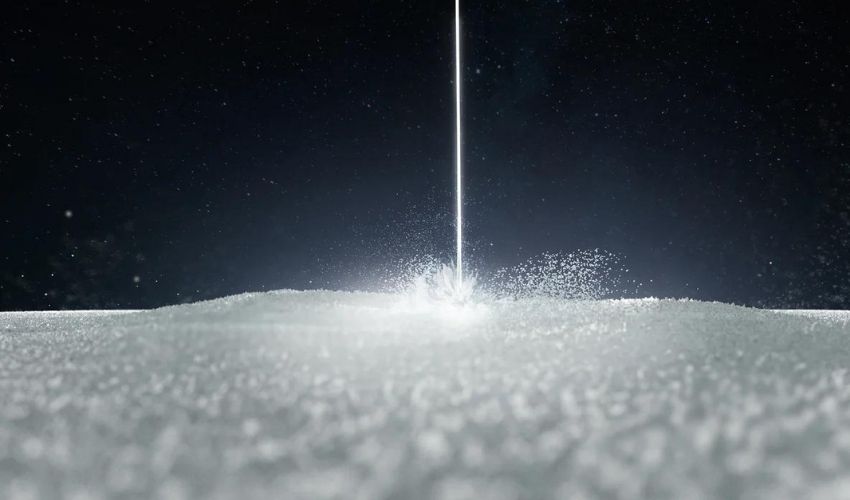
The part has been produced using the Formiga P110 Selective Laser Sintering (SLS) system from EOS.
The material that has been used is Polyamide 12. More information on the material and achievable mechanical properties can be found here.
The main reasons for selecting this technology are:
- No support structures needed: SLS does not require support structures. This is especially important for such an application since it would be almost impossible to remove support structures from within the channels.
- Strong mechanical properties: SLS offers good mechanical properties for the application. The almost anisotropic behavior of Polyamide 12 ensure sufficient strenght while enabling enough elasticity to perform the gripping mechanism.
Old vs. new gripper design


Source: EOS GmbH
Supply chain
Step 2: Optimize the supply chain
After optimizing the design of a part, the next step is to analyze how AM can be used to improve the supply chain of the part. Being a fully digital process, AM offers the potential to make supply chains less complex and save time during development and production.
Leading questions that should be answered during this step include:
- What are challenges of the current supply chain of the product?
- How can the updated design and process solve these challenges?
- What is the best production set-up?
What are challenges of the current supply chain of the product?
Challenges along the supply chain are often linked to the current design and production process. For the gripper, some of the main challenges are:
- Long lead times: The current design comes with a production leadtime of 12 days. Even though this sounds not too long, it can be in case of a standstill of production when a gripper is missing.
- High number of parts to keep on stock: The original design consists of 21 individual parts. This leads to the necessity to keep them on stock and manage a high number of suppliers.
- Shipping of sub-products around the globe: The 21 different components are produced in locations across the globe, leading to a negative ecological footprint.
How can the updated design and process solve these challenges?
- Short lead times: The SLS process comes along with short production lead times. A print typically takes less than one day and besides powder removal and blasting, no post processing is required.
- Reduced need for stock: The shorter production leadtime combined with the reduction to 2 components almost completely removes the need to keep parts on stock. Depending on the required lead time, parts can now be printed on-demand.
- Localization of production: The simplification of the supply chain enables local production. Instead of shipping 21 parts, the AM solution solely consists of one material. The supply chain can thus be realized locally.
What is the best production set-up?
The final aspect to consider is the most suitable production set-up. Generally, parts can either be produced externally at a service provider or on an in-house printer. The best option depends on several factors, such as in-house skills, required quantities and criticality of the application.
The production set-up should also take into account aspects of sustainability. Choosing a production location that is close to the customer allows to keep short lead times, reduce shipping costs and at the same time leads to a positive environmental footprint.
Business Model
Step 3: Challenge your Business Model
The last step is to understand if the current business model is still the most suitable or if AM has the potential to at least change parts of the business model. Even though AM will certainly be not the main driver for a company’s business model, it is important to understand how AM can be used to support a company’s business model.
We consider this to be the step that is hardest to achieve, since it requires a complete re-thinking of the business. At the same time, optimizing a business model can lead to a significant competitive advantage.
The following questions can guide you on the way towards optimizing your business model:
- Which aspects of the business model are influenced by the current manufacturing process?
- How does the use of AM affect these aspects?
- How could the new business model look like?
Since we do not have direct insights into the business model of Wittmann Robot Systeme GmbH, the following section will discuss how the business model of a company designing, producing and selling grippers could be optimized.
Which aspects of the business model are influenced by the current manufacturing process?
If the current business model of a company is to design, manufacture and sell grippers, the current manufacturing process has the following main influences:
- Complex and costly design process: Designing a new gripper is a complex process that needs to combine the application knowledge of the end user and knowledge related to gripper production. This results in high development costs for a new gripper. The business model is thus limited to selling standard grippers or expensive, customized solutions.
- Long leadtimes for designing and producing grippers associated with conventional manufacturing do not allow the company to respond to urgent customer needs.
How does the use of AM affect these aspects?
- Less complex design process: The fact that the entire gripper is now produced out of 1 material and 2 parts significantly eases design of new grippers. All sorts of grippers for a wide range of applications can be produced with the same logic.
- Shorter leadtimes for development and production of new grippers allow the company to react to short-term customer demands.
How could the new business model look like?
Instead of focusing on standard products or expensive and complex, individual solutions, the company could now start targeting customized solutions that require a short leadtime.
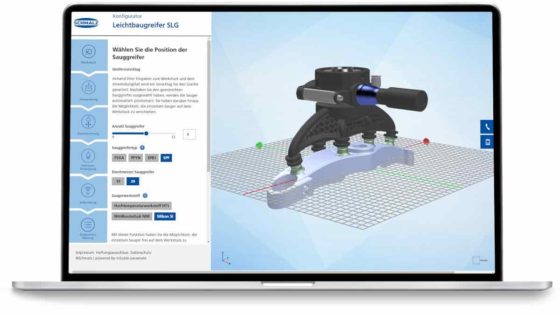
Using a software such as PARAMATE, that was designed to automate the design process, end-users can easily create their own designs. The resulting designs are then easy to print within days, either using external printing capacity or on an in-house printer. This allows the company to reach a new customer group and address their needs in a short and cost-effective way.
The case study in short
Reduced weight, cost and less components
The re-designed and printed gripper has been tested without failure at 5 million cycles. The lower weight and more compact design allows using a smaller handling system. The production lead time could be reduced from ~3 weeks to ~4 days.
The following figures summarize further benefits of the new gripper compared to the old design:
-1300 grams
Reduction of weight by over 80 %
-30 % costs
Reduction of production costs from ~2 700 EUR to ~1 700 EUR
-19 components
Reduction of individual components from 21 to 2
The gripping tips in action

By loading the video, you agree to YouTube's privacy policy.
Learn more



